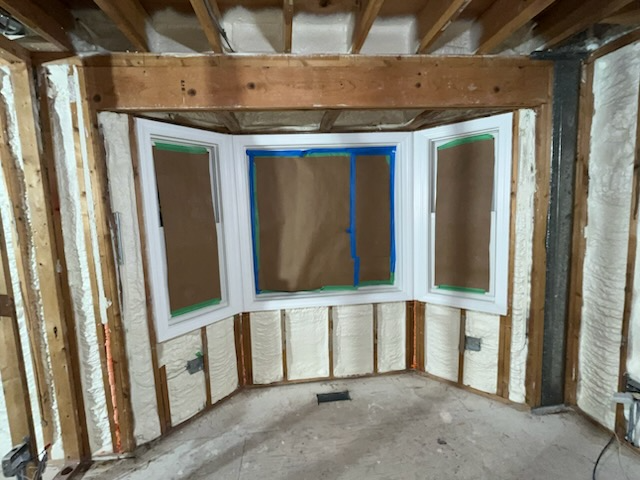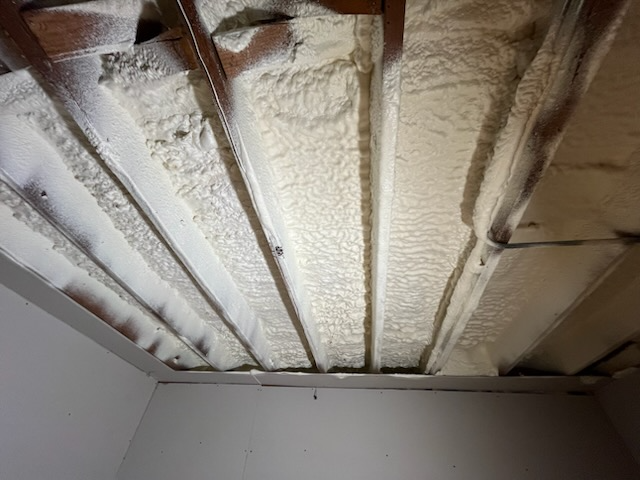
Closed-cell spray foam insulation stands out in eco-friendly buildings because it creates a tight seal that cuts energy loss. Builders apply this material directly to walls, roofs, and floors, where it expands to fill gaps and blocks air leaks. This approach reduces heating and cooling needs by up to 50 percent in typical homes, based on tests from the U.S. Department of Energy. Such savings lower overall energy use and support sustainable practices right from the start.
This guide, based on hands-on work in insulation projects across various building types, offers reliable steps for those aiming to build greener. It covers how this insulation works, its environmental benefits, and practical factors to consider.
Closed-cell spray foam consists of two components that mix on site and expand into a hard, dense material. Unlike open-cell versions, this type traps gases within its cells, which gives it high insulation value per inch. Installers heat and spray it into place, allowing it to adhere strongly to surfaces.
The material resists moisture, so it suits areas with high humidity or temperature swings. In the Midwest, where cold snaps test building envelopes, this property prevents condensation issues that lead to mold. Projects here often use it in attics and crawl spaces to maintain steady indoor conditions year-round.
Closed-cell spray foam boosts energy efficiency by providing an R-value of about 6 to 7 per inch. This rating measures how well it resists heat flow, making it one of the top performers among insulation options. A study by the Oak Ridge National Laboratory Oak Ridge National Laboratory confirms that homes with spray foam use 24 percent less energy for heating compared to those with fiberglass batts.
Lower energy demands mean less reliance on fossil fuel-based power plants. In regions like Chicago, with long heating seasons, this translates to noticeable reductions in utility bills and emissions. Builders report that combining spray foam with proper ventilation systems maximizes these gains.
Check building codes before installation; some areas require certified applicators to ensure even coverage and avoid over-application, which wastes material.
| Insulation Type | R-Value per Inch | Air Sealing Ability | Moisture Resistance | Environmental Impact (Emissions Reduction Potential) |
|---|---|---|---|---|
| Closed-Cell Spray Foam | 6-7 | Excellent | High | High (up to 50% energy savings) |
| Open-Cell Spray Foam | 3.5-4 | Good | Low | Moderate (30-40% energy savings) |
| Fiberglass Batts | 3-4 | Poor | Moderate | Low (10-20% energy savings) |
| Cellulose | 3.5-4 | Fair | Moderate | Moderate (20-30% energy savings) |
As the table above shows, closed-cell spray foam edges out others in key eco-friendly areas, drawing from data by the U.S. Department of Energy U.S. Department of Energy.
Using closed-cell spray foam cuts the carbon footprint by minimizing material waste during installation. The spray method requires no cutting or fitting, so scraps stay minimal. According to the EPA Environmental Protection Agency, such precise application reduces embodied carbon in buildings by supporting durable structures that last longer without repairs.
Market data shows the global spray foam insulation market reached $8.4 billion in 2022, driven by demand for low-emission materials in green certifications like LEED. This growth reflects wider adoption in sustainable projects, with projections for a 7 percent annual increase through 2030 from Grand View Research Grand View Research.
In humid summers around Chicago, the foam’s vapor barrier qualities prevent energy loss from damp air infiltration, further shrinking the environmental load.
Closed-cell spray foam lasts 25 years or more without settling or degrading, unlike loose-fill options that compact over time. This longevity means fewer replacements, conserving resources and reducing landfill waste. Field observations in Midwest commercial buildings show it withstands freeze-thaw cycles better than rigid boards.
Its structural strength adds rigidity to walls, allowing thinner assemblies that use less wood or steel. Such designs lower the upfront carbon from material production.
Pair spray foam with reflective roof coatings in sunny climates to amplify cooling efficiency; tests indicate up to 15 percent better performance in combined systems.

Assess the building’s layout and climate zone first. In cold areas like the Chicago region, closed-cell suits unvented attics, but ensure compatibility with existing HVAC to avoid airflow issues.
Weigh upfront costs against savings; while initial prices run higher, payback occurs in 5-7 years through energy reductions. Review local incentives, such as those from Illinois energy programs, that offset expenses for eco-materials.
Consult certified professionals to evaluate site-specific needs, including any chemical sensitivities, as the foam cures with off-gassing that requires ventilation during install.
Yes. It adheres well to aging structures and seals cracks that traditional insulation might miss, making it a strong option for retrofits.
When properly installed and cured, spray foam poses low risk. VOC levels drop quickly, and with ventilation, spaces are safe to re-enter within recommended timeframes.
Test for radon in basements before insulating; the seal can trap gases if levels run high, so address ventilation plans early.
Yes, it contributes points in systems like LEED by improving energy performance and air quality. The material’s high efficiency helps meet thresholds for sustainable sites and materials.
It performs well in sub-zero temperatures and high winds, common in the Midwest. The rigid structure prevents wind-driven air infiltration, maintaining indoor comfort.
Absolutely; DIY kits exist but lack the precision of pros, leading to gaps that undermine benefits. Certification ensures safe handling of chemicals.
Closed-cell foam meets Class A fire ratings when covered properly. Add intumescent coatings for added protection in exposed areas.
It works seamlessly; the tight envelope enhances the accuracy of smart thermostats by stabilizing temperatures, optimizing automated controls.
Closed-cell spray foam drives eco-friendly building through superior energy savings, moisture control, and durability. It reduces emissions and waste while fitting diverse climates. Evaluate site conditions, costs, and local rules to see if it matches project goals. Consider long-term efficiency and environmental impact when planning builds or upgrades.
For details on insulation options suited to your build, South Chicago Insulation offers guidance. Send inquiries to [email protected] or call (779) 803-8025. Discuss specifics like climate needs or code compliance to plan effectively.